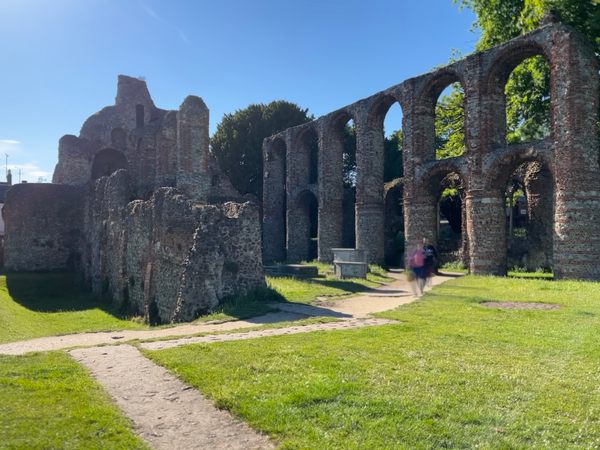St Botolph’s Priory, founded in the 12th century, is an example of the early religious architecture and history of England. As the first Augustinian priory in the country, it holds a significant place in the ecclesiastical history of England. The ruins seen today were initially built from a mixture of Roman bricks and Norman stonework, reflecting the Norman architectural influence in Colchester that was prevalent during its construction.
The priory was dedicated to St Botolph, a 7th-century Anglo-Saxon saint known for his missionary work and founding a monastery in East Anglia. This dedication highlights the medieval practice of venerating local saints and underscores the religious fervour of the period. The priory flourished until the dissolution of the monasteries under Henry VIII in the 16th century, which led to its decline and eventual ruin.
Walking through the remnants of St Botolph’s Priory, you can almost feel the weight of history. The tall arches and impressive west front, although in ruins, still convey the grandeur that once characterized this religious site. The tranquil setting amidst green lawns provides a serene backdrop, inviting visitors to reflect on the priory’s historical and spiritual significance.
Know Before You Go
The priory is open year-round, but the best time to visit is during the spring and summer months when the weather is pleasant, and the surrounding gardens are in full bloom. There is no entrance fee, making it an ideal spot for a leisurely visit.
The ruins are accessible, but the uneven ground and remnants of ancient structures may pose challenges for those with mobility issues. It’s advisable to wear comfortable footwear. Do respect the historical site by not climbing on the ruins or disturbing the site. Dogs are allowed but should be kept on a leash to maintain the tranquility of the area.

